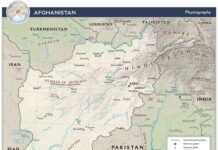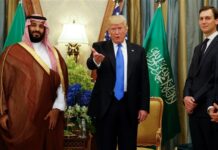Context
 2010 has already been a rocky year for US-China relations, with the sale of weapons to Taiwan by the US, Google threatening, then finally leaving China in protest over email hacking and censorship, and Obama’s meeting with the Dalai Lama. The status of US-China relations is strained, but strangely convergent on one issue: Pakistan.
2010 has already been a rocky year for US-China relations, with the sale of weapons to Taiwan by the US, Google threatening, then finally leaving China in protest over email hacking and censorship, and Obama’s meeting with the Dalai Lama. The status of US-China relations is strained, but strangely convergent on one issue: Pakistan.
Analysis
Mistrust is a key issue in the US-China relationship, and runs deep, and through many streams. Political, economic and military mistrust sit atop a deeper mistrust of the fundamental differences between the two governments’ structures and even the major differences in society. China and the US make strange bedfellows, but share a bed they must.
One of the biggest hurdles for China and the US was Google’s decision to leave China. This happened after the revelation that Gmail accounts of known Chinese activists were being routinely hacked and also because Google refused to continue censoring search results. Google had hoped to retain its presence in China via an uncensored Google in Hong Kong, but immediately after they disabled their China service, the Chinese government began blocking use of the Hong Kong server.
This was on March 22, and there was plenty of outcry, with Chinese media claiming the decision was a US government conspiracy. This compounded the already strained relationships after US President Obama met with Tibetan spiritual leader the Dalai Lama. China was quick to anger when Obama hosted the Dalai Lama at the Whitehouse in mid-February, with the Chinese Foreign Ministry spokesman Ma Zhaoxu saying that the meeting “violated the U.S. government’s repeated acceptance that Tibet is a part of China and it does not support Tibetan independence.”
Obama used the Dalai Lamas visit to highlight continuing issues with China, such as its human rights record, its currency practices and the internet censorship-an issue which was soon to blow out of the water, as previously discussed.
On the Chinese side, the western media reports the Chinese Navy has adopted an increasingly assertive posture, in the Pacific realm and Middle East. Part of the Chinese new Navy strategy reportedly is to extend its influence from South China Sea and Philippines to the ‘second island chain’ – a zone which overlaps with American sphere of influence. The news analyses conclude that it’s not that Chinese desire confrontation with US but it is increasingly making its presence known. China is calling these tactics part of ‘for Sea Defense’ as oppose to its past stance of just protecting Chinese Coasts. Rear Adm. Zhang Huachen, deputy commander of the East Sea Fleet, reported stated to state news agency Xinhua:
“With our naval strategy changing now, we are going from coastal defense to far sea defense.”
On the other hand Admiral Robert F. Willard of the US Pacific Command told a Congressional hearing in March: “Of particular concern is that elements of China’s military modernization appear designed to challenge our freedom of action in the region.”
On April 10th a Chinese flotilla was reported to be operating close to Japan. This was for the first time the Chinese were spotted so close to Japan. When two Japanese ships attempted to follow, a Chinese helicopter came as close as 300 feet to one of the Japanese frigates.
Another dimension of the US-Chinese relations can be understood from the dimension of US-Russia relations. The US-Russia relations had hit a low since conflict in Georgia in 2008, and also due to matters related to NATO’s expansion in Russia’s Near Abroad. With the signing of the new START treaty and Russian support for NATO supply lines through Central Asia; these relations appear to be on the mend. From recent Russian statements it appears it would also assist US in its effort to impose strong sanctions against Iran, even thought Russia provides the key assistance towards strengthening Iran’s nuclear capabilities. On the surface, China appears to be the last hold out opposing sanctions against Iran but Russia is not on board fully either. US is attempting to convince China to at minimum abstain, if it comes vote in the UN Security Council. Russia like China has significant interest in Iran, however it hides its true position behind strong Chinese opposition to sanctions on Iran. This helps Russia better its relations with US at the cost of China. There are reports that China may have linked its position on Iran to the American support for Israel in the Middle East.
Despite these tensions between US and China, there have also been signs that the hurdles faced in early 2010 are not going to disrupt either country from pursuing their mutual relationship-because no matter the differences, the relationship is too important to forego.
After months of strained relations, a little relief was seen when Chinese President Hu Jintao attended a nuclear security summit in Washington over April 12 and 13. Many had predicted that Hu would boycott the summit in protest over the sale of arms to Taiwan and the meeting with the Dalai Lama, so the summit attendance was taken as a litmus test for US-China relations. Hu’s attendance indicates that while fraught, the relationship is still too valuable to jeopardize.
The decision by the US to delay the release of a report to Congress on international economic and exchange rate policies-one that no doubt contains damning sentiment towards China’s policy of buoying the Yuan-is seen as a tacit signal to China that the US is not wanting to open yet another wound between the two countries, even though the sore is festering. These signs of good will are small, but they send a large signal-one that ultimately says ‘we’ll work it out.’
 What this means for Pakistan?
What this means for Pakistan?
While the US is increasingly ill-favored in Pakistan, China stands in a high approval rating. Pakistan forged a strong relationship with China back in the 1960’s in mutual antagonism over India-for Pakistan this relationship has been paramount ever since, while for China it has been important, but of less significance-until recently.
Ironically the one thing the US and China have agreed on in recent months is the need for a solution in Pakistan. Because the stability of the region-and indeed the world-seems to rest in the wilderness of the Af-Pak border, both China and the US realize the need for convergence on a strategy for dealing with Pakistan.
While Sino-Pak relations have been characterized by constant and deepening friendship over the years, US-Pak relations have suffered from ‘hot and cold’ feelings-Pakistan has been on the receiving end of both praise and punishment on and off from the US.
Despite their differing relationships with Pakistan and each other, the US, China and even Russia have a vested interest in seeing Pakistan stabilized. For China, vital trade routes have been developed overland through Pakistan, as well as a friendly naval port at Gwadar in Pakistan that some claim is China’s ‘listening post’ for South Asian and Arab naval traffic. Increasingly the disruption in China’s Xingjiang province with the Uighur people seemingly taking on the militant Islamic ideology that is said to be festering in the Af-Pak region is a definite reason why China wants to stabilize Pakistan. Meanwhile Chechen insurgency is gaining momentum once more.
The US sees Pakistan as the cornerstone of the ‘Global War on Terror’ and a worrying one at that since Pakistan has one of the fastest growing nuclear capabilities in the world. Pakistan’s nuclear arsenal is not as worrying as it would be if the ‘unfriendlies’ in Pakistan-the Taliban or Jihadist movements, were to gain control of the country.
While both the US and China are in agreement that Pakistan is an issue, there is still a deep mistrust between both countries, and of the US by Pakistan, that will hamper efforts at multilateral solutions. If the pressing issue of the security of Pakistan’s nuclear arsenal is brought to discussion, China and Pakistan may see this as a US bid to gain vital intel-something which India would dearly like, and something which neither country would trust the US not to give to India.
Similarly both the US and China, who have been strengthening ties with India over the last decade, face mistrust from India and Pakistan as to which ‘side’ they are really on-because in the India-Pak conflict, being on both sides is not really an option (as far as India or Pakistan see it). No wonder right at the time US-Pakistan were engaged in strategic dialogue in Washington DC, Putin was visiting India and revitalizing and broadening their strategic partnership.
While the US and China face their own prickly issues with each other, Pakistan is something they can both agree needs attention, and cooperative action on, swiftly. While the situation is not at all simple to remedy, combined involvement by China and the US in helping Pakistan reach stability may prove to be the bilateral bonding exercise that the two powers need to solidify their working relationship.
Tell Us What You Think



